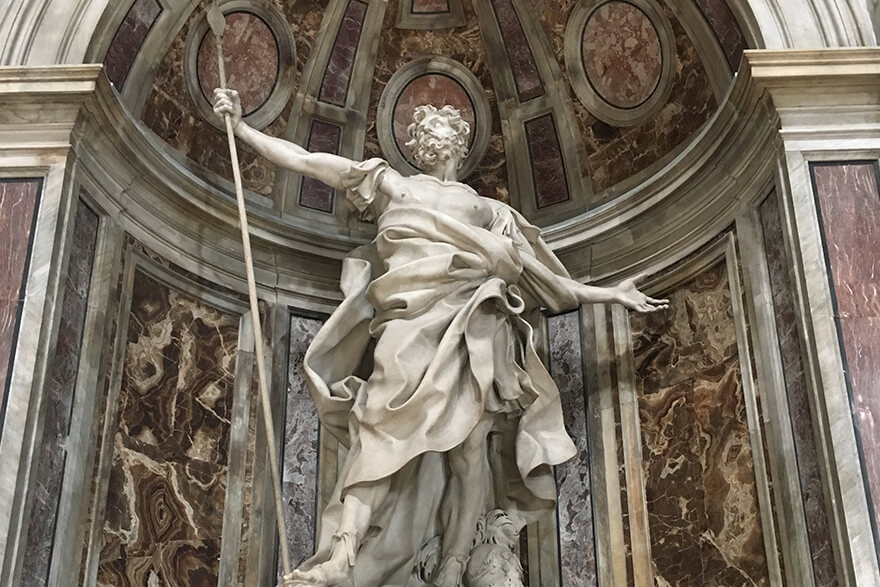
It does seem peculiar: the man, the “centurion,” who pierced the side of Christ to make sure He was dead — this person who was under the command of Pontius Pilate, probably a seasoned executioner — is a saint in the Cathoic Church.
By tradition, his name is “Longinus.” It’s not a name you’ll find in the Bible. In fact, there is no description of him at all.
So how could we know anything about him, let alone that he had saintly characteristics?
According to Christian tradition, witnessing the events of the Crucifixion and Jesus’ miracles led Longinus to believe Jesus was the Son of God.
“Now the centurion, and those who were with him keeping guard over Jesus, when they saw the earthquake and the things that were happening, became very frightened and said, ‘Truly this was the Son of God!’” (Matthew 27:54).
If Longinus was the one in the crowd who uttered those words, as tradition has it, he was the first among the masses to officially make such an awesome pronouncement.
This was a reasoned conclusion of a rather hardened man who probably had been putting people to death for years. It was the conclusion of a man who like others had seen extraordinary events in association with the most critical death in all of history. He was moved enough to declare Jesus a deity.
Rarely do we give enough attention to Longinus, nor to the phenomenon of that quake — and the fact that, during daytime, there were three hours of darkness.
The story of Longinus’ life after the Crucifixion varies in different traditions, but it often includes his baptism, preaching of the Gospel, and martyrdom for his Christian faith. These acts are significant reasons for his veneration as a saint in the Catholic Church, as well as in the Eastern Orthodox one.
And his veneration as a saint is also based on the miraculous aspects associated with his story, such as the healing of his supposed partial blindness when, as it is said, some of the blood and water from Jesus’ side fell upon his eyes.
The spear Longinus used, known as the Holy Lance or Spear of Destiny, became a significant Christian relic, adding to his legend and devotion. His feast day is celebrated on March 15 in the Roman Catholic Church and on October 16 in the Eastern Orthodox Church, marking his significance as a martyr and saint in Christian tradition.
Tradition further has it that Longinus became a monk in Cappadocia, where supposedly he was arrested for his faith and tortured, his teeth forced out and his tongue chopped off.
Still, says the legend, he was able to speak miraculously clear.
At one point, goes the legend, he destroyed idols in the presence of the governor, who was then made blind by the demons that flew from the idols but had his sight restored — as had Longinus at Calvary — when the saint was being beheaded and blood came in contact, as happened to his own, with the governor’s eyes.
Whatever the accuracy and details, the spear the centurion used has long been associated with special powers — considered the “spear of destiny.” Charlemagne put a shard of it in his own sword; Napoleon once tried but failed to capture it. Hitler was enthralled with what, in all likelihood, was a replica of Longinus’s spearpoint at the Hofsburg Museum in Vienna. Two hours after Americans captured Nuremberg (where the replica was relocated during World War Two), Hitler, now powerless, committed suicide.
Actual relics of the saint are now in the church of Saint Augustine in Rome and the real spearhead is contained in one of the four pillars over the altar in the Basilica of Saint Peter’s in Rome.
+

